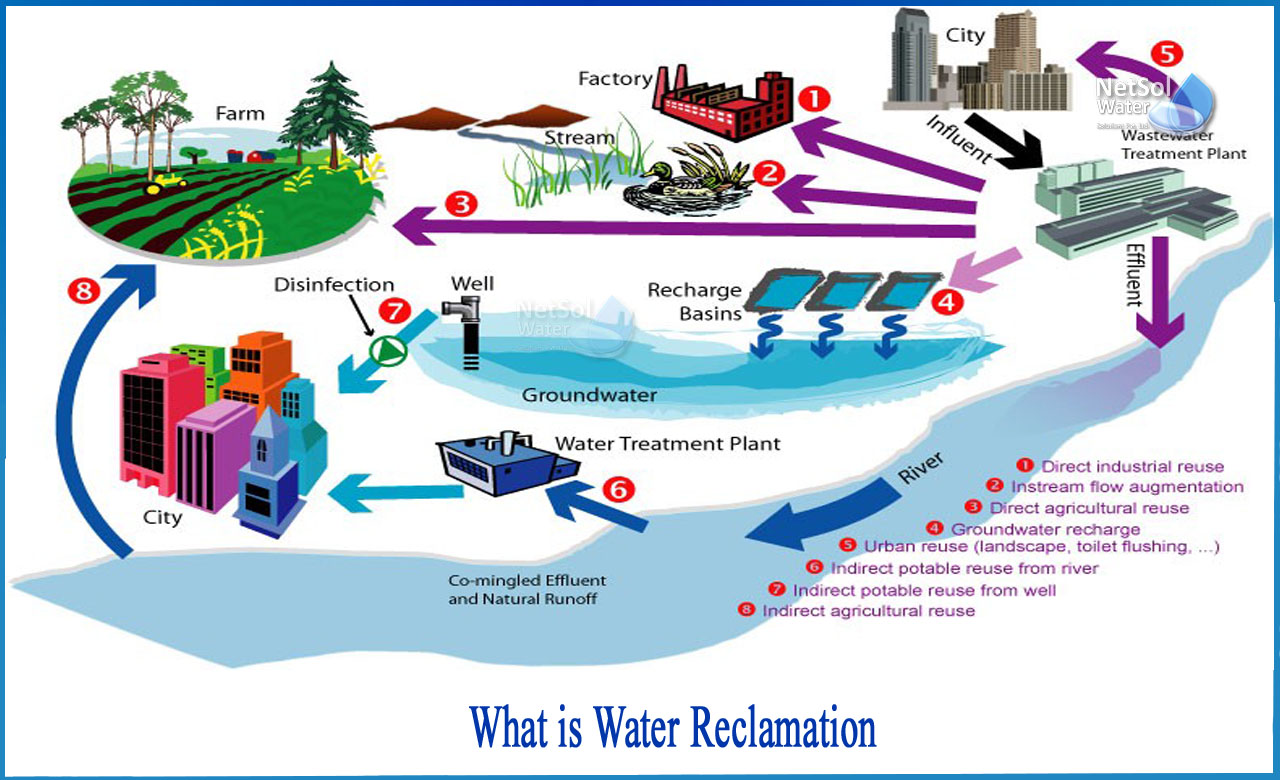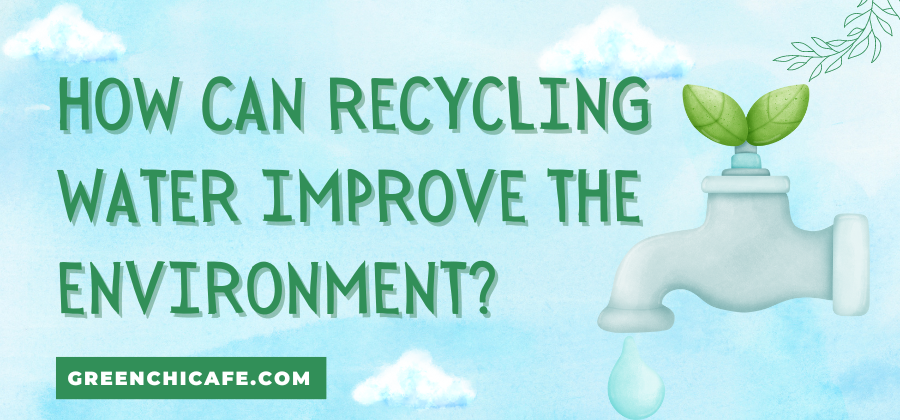Water recycling plays a vital role in reducing the strain on freshwater supplies while also decreasing pollution.
This article explores the many ways that reusing and repurposing water can benefit ecosystems, mitigate climate change impacts, and build more sustainable cities.
It is an effective strategy for adapting to climate change that provides social, economic, and environmental benefits.
How Can Recycling Water Improve The Environment?

Water recycling improves the environment by reducing pollution discharge into waterways, decreasing diversion from sensitive ecosystems, and providing a sustainable supplemental water source.
It helps mitigate climate change impacts and enables communities to optimize local water resources.
Key Points
- Water recycling decreases demands on limited freshwater supplies and protects aquatic habitats.
- It reduces greenhouse gas emissions and energy usage associated with water transport.
- Recycled water augments existing supplies, building resilience to droughts and climate change.
How Does Water Recycling Reduce Environmental Impacts?
Recycling water keeps wastewater out of rivers, lakes, wetlands, and coastal areas, preventing pollution of these sensitive habitats.
This protects wildlife and allows healthy aquatic ecosystems to thrive.
Discharging less into waterways also means lower greenhouse gas emissions.
And reducing water diversion preserves flows to wetlands and the plants and animals that depend on them.
How Does Water Recycling Help With Sustainability?

Water recycling bolsters sustainability by providing an additional reliable and local source of water.
This enhances water supply security, reduces reliance on imported water, and lowers the energy needed to transport water.
Recycling water also cuts down on groundwater pumping, helping prevent land subsidence.
And it enables the sustainable use of groundwater basins.
How Can Water Recycling Augment Freshwater Supplies?
Treating wastewater for reuse augments water supplies, offsetting the need for new, costly water infrastructure projects.
It can make up approximately 10-20% of a city’s water demand.
Recycled water can be used for irrigation, industrial processes, toilet flushing, and recharging groundwater aquifers.
The additional supply buffers against droughts and climate change.
How Does Water Recycling Help Mitigate Climate Change?
Water recycling reduces energy usage associated with pumping, treating, and conveying water. And capturing wastewater keeps greenhouse gases like methane out of the atmosphere. Water reuse also helps build resilience to climate change effects on water cycles by providing a local, reliable supply. It enables a diversified portfolio of water resources.
How Can Water Recycling Support Sustainable Cities?
Water recycling allows cities to optimize local water resources and reduce reliance on imported supplies.
The enhanced self-sufficiency promotes conservation and sustainable expansion.
And including recycled water in urban water management fosters circular economies.
Water reuse also reduces the discharge of urban runoff into watersheds.
Plus, it decreases waste and energy usage.
Does Recycled Water Get Returned to Natural Systems?
Yes, recycled water used to recharge aquifers and augment surface water flows gets returned to natural systems.
This supports ecosystems, wetlands, and downstream users. However, recycling water consumes energy.
Benefits must be balanced with greenhouse gas emissions and chemical use from advanced treatment processes required.
Is it Safe to Drink Recycled Water?
Yes, recycled wastewater can be treated to stringent standards making it completely safe for human consumption.
Technologies like microfiltration, reverse osmosis, UV disinfection, and advanced oxidation ensure recycled drinking water meets all public health regulations.
Studies consistently confirm it is just as safe as conventional tap water.
How is Recycled Water Regulated and Monitored?
In the U.S., recycled water for potable reuse must adhere to strict federal and state criteria.
Treatment systems undergo rigorous permitting procedures.
Usage is continuously monitored to ensure standards are met.
The EPA has established guidelines for water recycling to protect public health. Regulations cover treatment processes and water quality testing.
Does Water Recycling Have Drawbacks?
Potential drawbacks depend on the source water quality, intended use, and technology implemented.
Recycling water is energy-intensive. And chemical use needs oversight.
There are also public perception challenges surrounding “toilet-to-tap”.
But proper education and outreach can help build support and trust.
With proper management, water recycling is safe and sustainable.
How is Recycled Water Used in Agriculture?
In agriculture, recycled water irrigates over 20 million acres of farmland worldwide.
It provides nutrients and water for crop growth. Monitoring ensures any salts and contaminants remain below thresholds for irrigation.
Farmers must adhere to strict guidelines on hydraulic loading rates and wash periods between irrigations.
proper precautions, recycled water enables dependable agriculture.
How Can Recycling Improve The Environment?
Recycling can improve the environment in numerous ways.
It conserves natural resources, reduces greenhouse gas emissions from manufacturing and transporting raw materials, saves energy, reduces landfill waste, and helps create a more sustainable economy.
Recycling transforms waste into valuable commodities, decreasing the need for destructive resource extraction.
It also lowers pollution that contaminates ecosystems.
Expanding recycling infrastructure and increasing participation creates green jobs.
Ultimately, recycling is one of the most effective ways individuals and businesses can reduce their environmental impact.
Is Recycling Water Better For The Environment?
Yes, recycling water is a more sustainable practice compared to solely utilizing freshwater supplies.
Water recycling reduces strain on natural water bodies, lessens the discharge of pollutants into rivers and oceans, decreases energy usage for transporting water, and suppresses greenhouse gas emissions.
It also limits groundwater pumping which can cause land subsidence.
And water recycling augments freshwater availability, providing a buffer against drought.
The degree of environmental benefit depends on the particular technologies and energy sources used.
But overall, reusing water protects habitats and promotes the wise use of limited resources.
How Does Water Recycling Help Climate Change?
Water recycling helps mitigate climate change in several key ways.
It reduces energy consumption associated with pumping, treating, and transporting water, lowering fossil fuel use and greenhouse gas emissions.
Capturing wastewater also stops methane and other gases escaping into the atmosphere.
Additionally, reusing water limits diversion from sensitive ecosystems, preserving their capacity to act as carbon sinks.
Water recycling also makes communities more adaptable to climate change impacts by diversifying the water supply mix.
Ultimately, recycling water reduces pressures that deplete resources and release greenhouse gases, which helps address the underlying drivers of climate change.
How Is Water Recycled In The Environment?
In nature, water is continuously recycled through the hydrologic cycle.
Evaporation from oceans, rivers, and lakes forms clouds.
Precipitation falls back to the earth’s surface, replenishing water bodies and groundwater.
Transpiration by plants returns moisture to the air.
Runoff collects in watersheds.
This natural recycling cleanses and redistributes Earth’s fixed water supply.
Humans tap into this cycle by capturing water from the environment, treating wastewater, and returning recycled water to augment natural processes.
Treatment systems clean the water for reuse in irrigation, industry, drinking supplies, and replenishing ecosystems.
Key Takeaways:
- Water recycling provides enormous benefits for the health of our environment as well as the resilience and sustainability of our communities. Safely reusing and repurposing water will only become more critical in the face of growing populations and a changing climate. With smart management, recycled water allows us to optimize every drop.
Frequently Asked Questions
What Are Some Examples of Water Recycling?
Common examples include using treated wastewater for irrigation, industrial processes, toilet flushing, and recharging groundwater aquifers. Recycled water can also be purified to drinking water standards.
How Much Water Can Be Recycled?
Studies estimate 10-20% of municipal water demands can be met through water recycling. As technology improves, recycled water could supply over 30% of needs in some regions.
Is Recycled Water As Good As Fresh Water?
Yes, recycled water can be treated to meet or exceed all freshwater standards for safe usage. Monitoring ensures recycled water quality for its intended purpose.
Can Recycled Water Hurt The Environment?
If not managed properly, recycled water could concentrate salts and nutrients when used for irrigation. But compliance with usage guidelines prevents environmental harm.
GreenChiCafe is passionate about our natural world and preserving Earth’s precious water resources.
Check out our website for more content about water recycling, conservation, and building sustainable communities.
